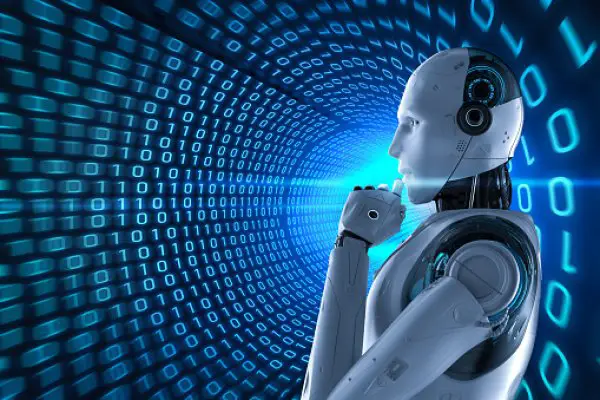Artificial intelligence (AI) has come a long way in recent years, with machines now able to accomplish tasks that were once thought impossible. One of the most exciting developments in this field is the achievement of the “theory of mind” in machines, which allows them to understand other beings’ mental states and perspectives.
This breakthrough has enormous potential for a wide range of applications, from improving the performance of virtual assistants to enhancing the accuracy of predictions and enabling more natural human-machine interactions.
The concept of the theory of mind has long been considered a crucial aspect of human intelligence, as it allows us to predict and understand the behavior of others based on our perception of their thoughts, beliefs, and emotions.
Until recently, it was believed that this ability was unique to humans and that machines would never be able to replicate it. However, recent advancements in AI have enabled machines to achieve this level of sophistication.
-For a long time, artificial intelligence has outperformed humans in tasks requiring analytical thinking. However, it could be more proficient in intuition and the ability to conclude.
– Stanford University scientists sought to explore whether neural networks such as GPT-3.5 can pass Theory of Mind (ToM) assessments, which measure the cognitive ability to anticipate the behavior of others.
– The research indicates that GPT’s capacity to comprehend ToM has advanced rapidly in the last few years, with its most recent release producing results similar to those of a 9-year-old human.
The AI revolution is well underway as increasingly intelligent machines are rapidly mastering the intricate art of replicating human behavior. It’s widely known that AI can outperform us in games like Chess and Go, yet our minds can do far more than capture a king.
The subtler abilities, such as inference and intuition, are more elusive and almost instinctive, helping us anticipate and comprehend other people’s behavior.
With the coming of Open AI’s Generative Pre-training Transformer (GPT) and other advanced AI platforms, the distinctions between humans and machines are gradually becoming blurred.
Michal Kosinski, a computational psychologist from Stanford University, undertook a fresh investigation utilizing multiple versions of OpenAI’s GPT neural network—from GPT-1 to the most up-to-date GPT-3.5—to administer “Theory of Mind” (ToM) tests. ToM tests were initially created in 1978 to estimate the intricacy of a chimpanzee’s mind to foretell the actions of others.
Check Out Even More From Popular Mechanics!
A sample question posed to AI may ask it to predict a human’s reaction when a bag labeled as “chocolate” is opened and popcorn is inside. This problem requires the machine to deduce what anyone would do in a common, straightforward situation.
Kosinski’s team used “sanity checks” to analyze how well GPT networks understood the scenario and the human’s predicted response. The results were published online on arXiv, the pre-print server.
This material was obtained from Twitter. Finding the same content in a different format or discovering more information on their website is possible.
At the beginning of 2018, GPT-1’s results on tests could have been more impressive. However, by November 2022 – when GPT-3.5 was released – the neural network had gone through various iterations, enabling it to display remarkable improvement and even acquire a “Theory of Mind” comparable to that of a 9-year-old human.
Kosinski believes AI is on the brink of a significant transformation since its capacity for recognizing and anticipating human behavior would render it much more functional.
Kosinski suggests that Artificial Intelligence could benefit from recognizing and understanding the thoughts, feelings, and intentions of humans and other AI. This capability would allow it to demonstrate empathy, make moral decisions, and become self-aware.
Programming empathy and morality could be of great benefit when it comes to decisions such as if a self-driving car should risk the safety of its driver to save the life of a child crossing the street.
A central concern is whether neural networks use theory-of-mind (ToM) intuition or bypass it using certain unknown language patterns. This could explain why this capacity appears in language models, which aim to comprehend the delicate subtleties of human speech.
Kosinski suggests that by investigating the abilities of AI systems, we are, in effect, exploring our cognitive powers since many aspects of the human mind remain scientifically unknown. Therefore, this leads to the inquiry: Can humans do this language trick but are unaware?
Kosinski suggests that by studying AI, we may gain an understanding of how the human mind works. AI could mimic some human processes when tackling similar challenges as it learns to take on difficult tasks.
If you want to understand something better, constructing it yourself is the way. Darren, who resides in Portland and has a pet cat, is known for creating and revising content related to science fiction and the functioning of our world. His work can be located on Gizmodo and Paste if one looks carefully enough.
The recent advancements in artificial intelligence (AI) have allowed machines to achieve a level of sophistication that was once thought impossible. One of the most impressive developments in this field is the achievement of the “theory of mind” in machines, which enables them to understand other beings’ mental states and perspectives.
This breakthrough has enormous potential for various applications, including improving virtual assistants’ performance, enhancing predictions’ accuracy, and enabling more natural human-machine interactions.
Source: Popular Mechanics



